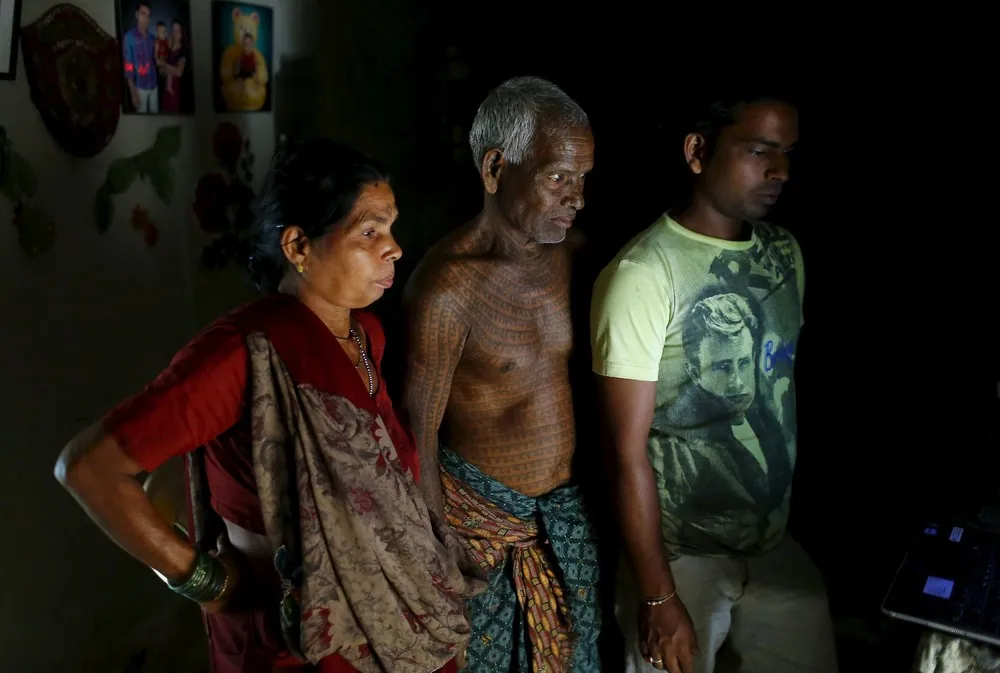|
Mahettar Ram Tandon, 76, (C), a follower of Ramnami Samaj, who has tattooed the name of the Hindu god Ram on his full body, watches a religious movie on a computer with his wife and son (R) inside his house in the village of Jamgahan, in the eastern state of Chhattisgarh, India, November 17, 2015. �It was my new birth the day I started having the tattoos�, Tandon said. �The old me had died�. Denied entry to temples and forced to use separate wells, low-caste Hindus in the eastern state of Chhattisgarh first tattooed their bodies and faces more than 100 years ago as an act of defiance and devotion. Ramnamis wrote the Hindu god Ram's name on their bodies as a message to higher-caste Indians that god was everywhere, regardless of a person's caste or social standing. While discrimination on class grounds has lessened and most young Ramnamis today avoid full-body tattoos, elderly devotees are still proud of the indelible message their bodies have carried for decades. �The young generation just don't feel good about having tattoos on their whole body�, he said. �That doesn't mean they don't follow the faith�. (Photo by Adnan Abidi/Reuters)
|

